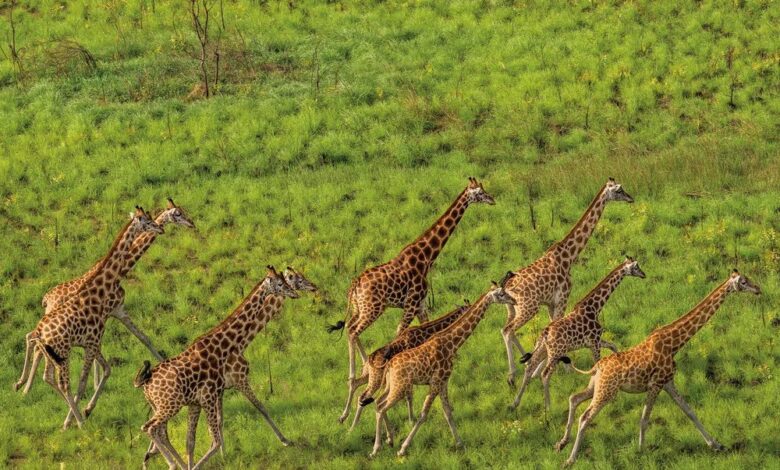
Nubian giraffes in South Sudan during an aerial survey in April 2023. The area is home to what is probably the planet’s largest land mammal migration. Photo Credit: Marcus Westberg
Animals AfricaGiraffes Are at Risk of Extinction, and Researchers Are Here to Help
New tracking devices are helping scientists to understand and protect plummeting giraffe populations.
“We can’t conserve what we don’t understand. We need these data to protect this landscape before it’s too late,” says Julian Fennessy, co-founder and conservation director of the Namibia-based Giraffe Conservation Foundation (GCF).
Giraffes are experiencing a “silent extinction”. Due to our familiarity with the species, we tend to have a false impression of their overall numbers, rendering them less visible than other endangered species, such as elephants and rhinoceroses. Furthermore, due to giraffes’ long, skinny necks, typical GPS collars are more or less impossible to use to gather data on the animal. Thanks to technological advances over the last two years, trackers are now small enough to strap onto the tip of the tail or an ear and can be powered by solar energy. These new trackers will allow data to be collected from a 7.4 million-acre area, revealing trends and allowing for further protections for this particular animal.



